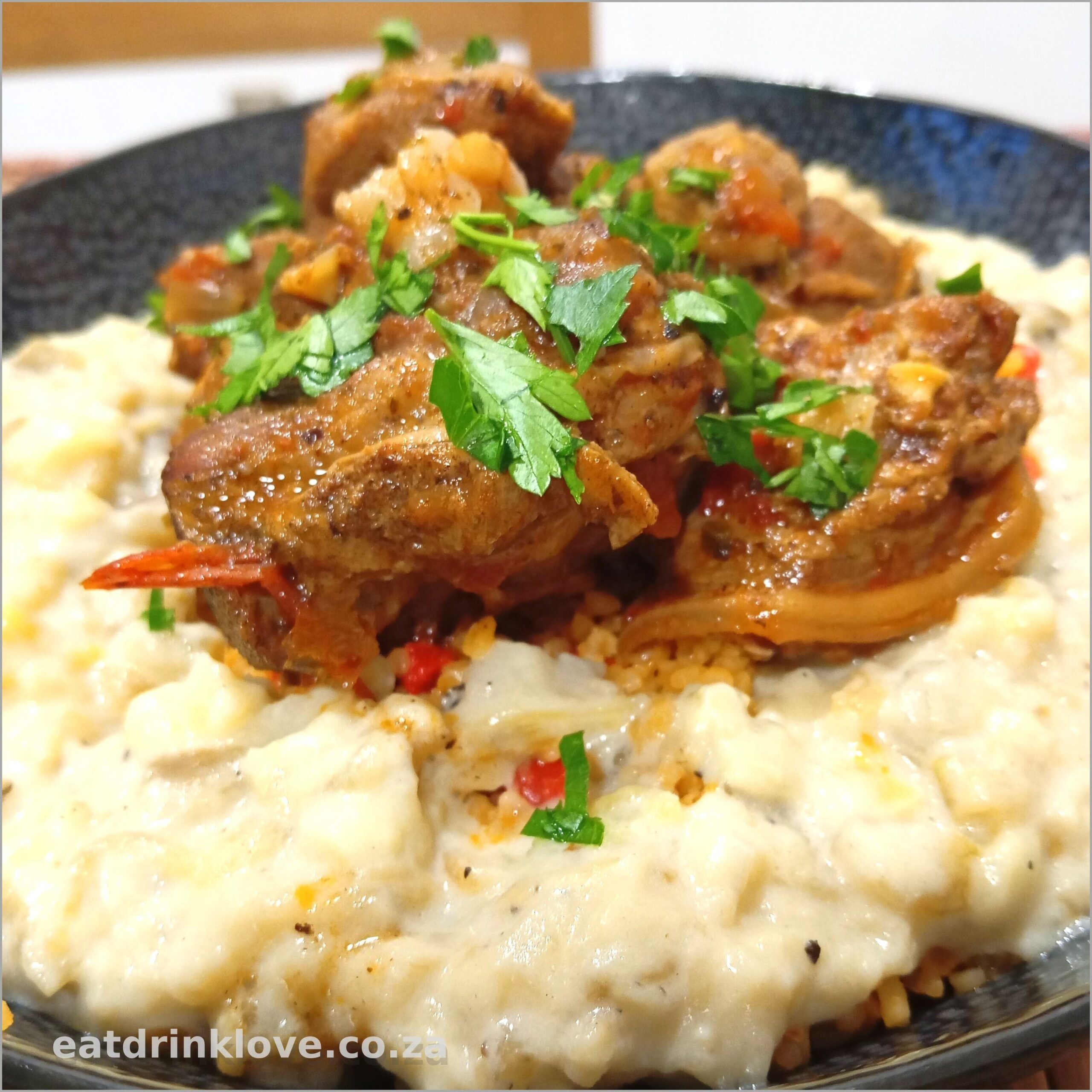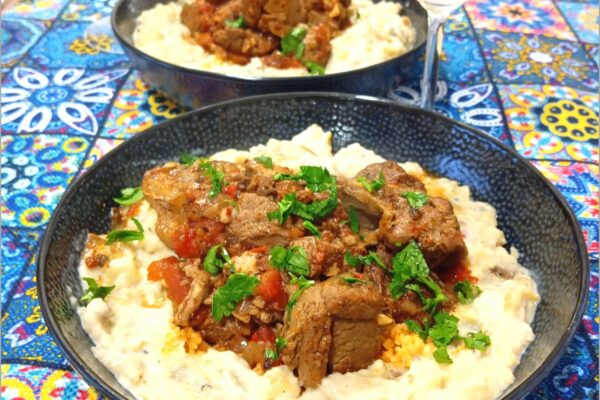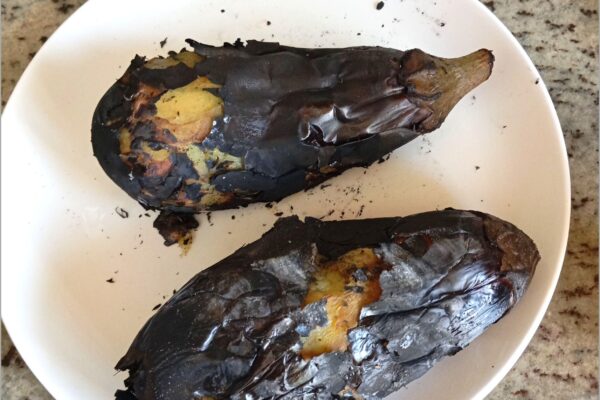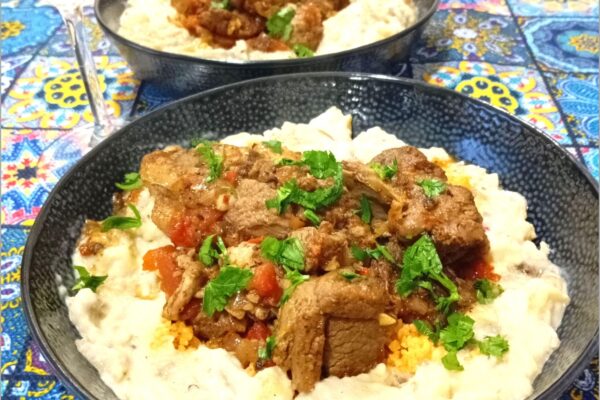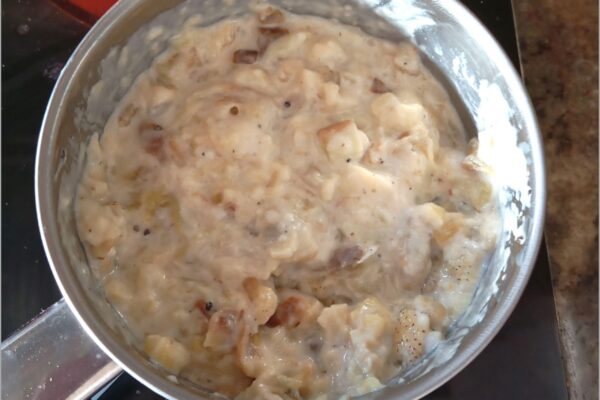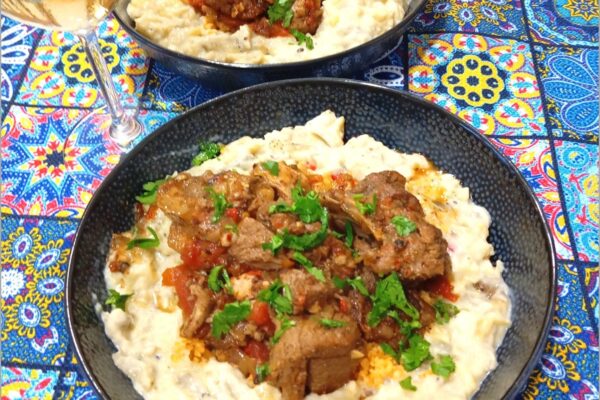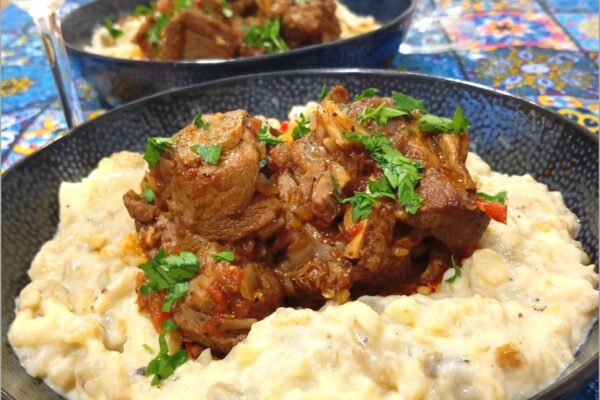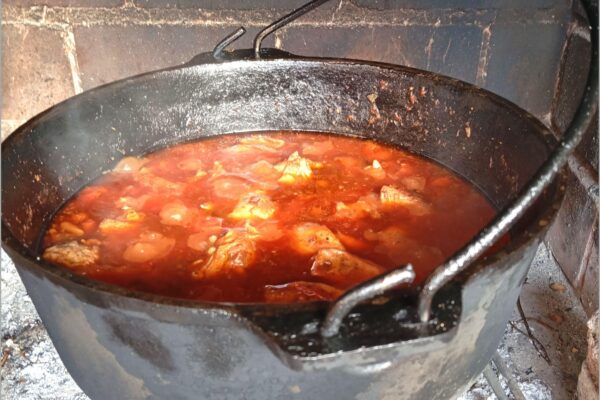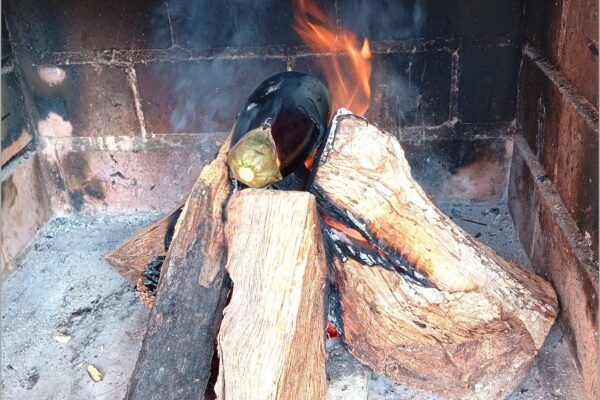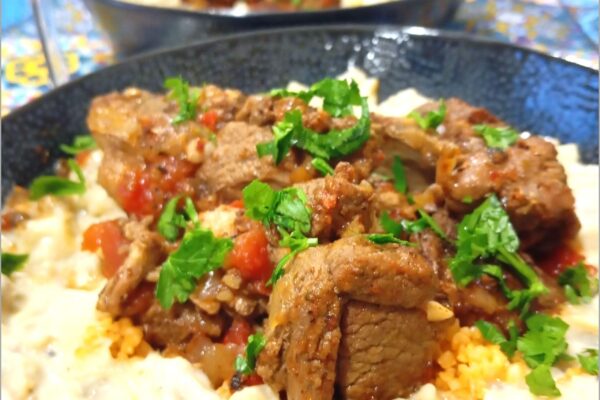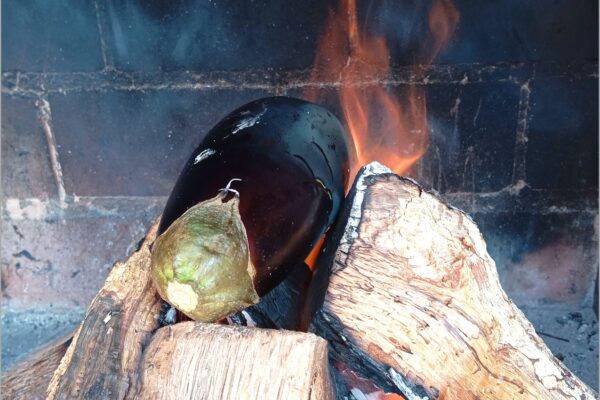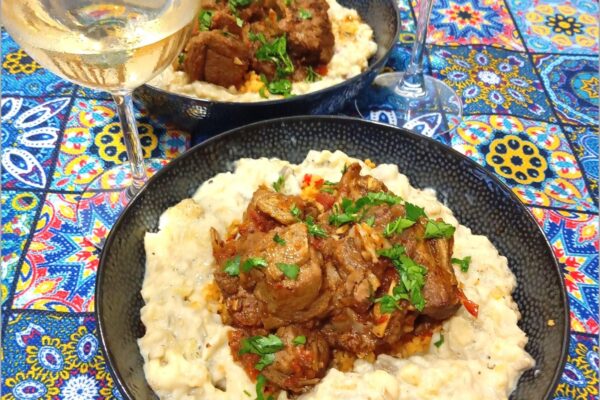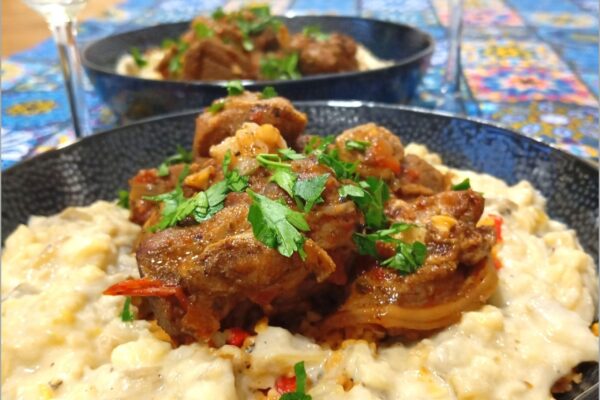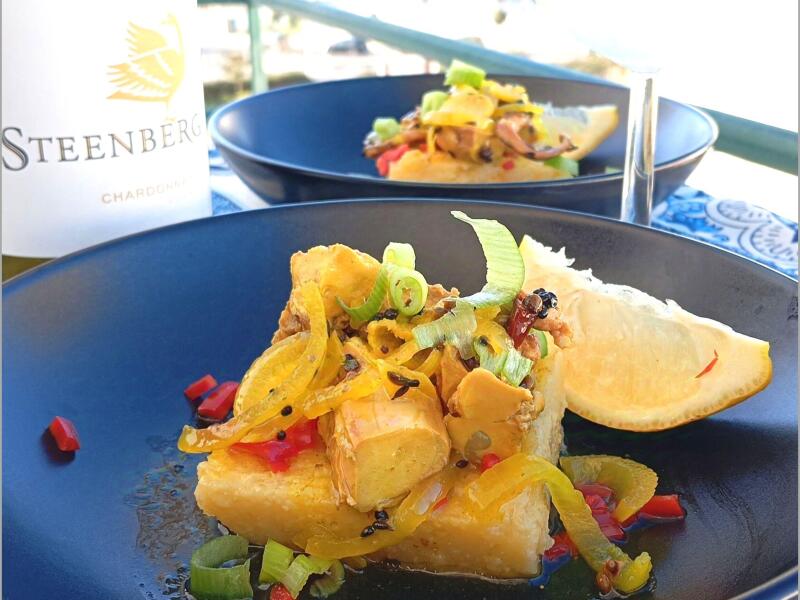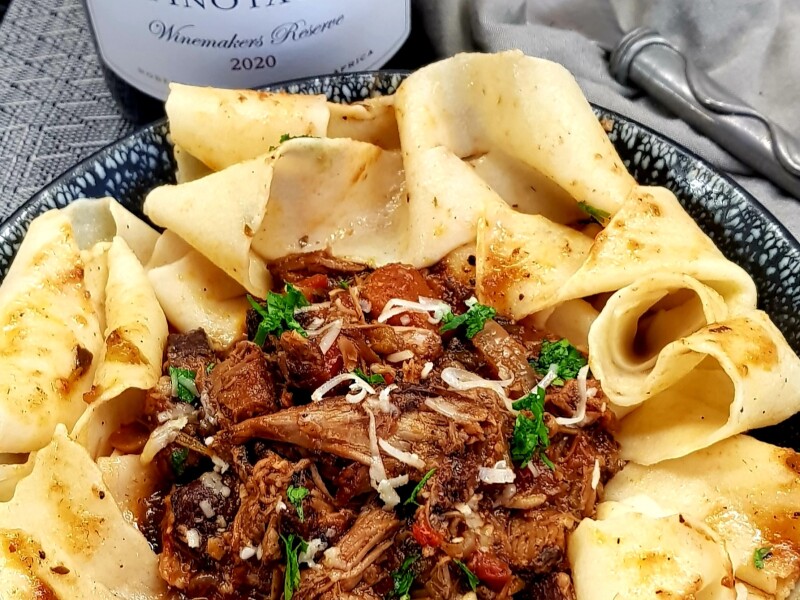Hünkar Beğendi, or “Sultan’s Delight,” is a dish with its origins in the kitchens of the Ottoman Empire. A combination of tender lamb stew and creamy, smoky eggplant purée reflects the sophistication of Turkish cuisine, blending rustic flavors with royal finesse.
This dish was adapted from Vidar Bergum’s recipe on his blog. I’ve added a smoky wood-fire twist and a spiced marinade.
Ingredients
For the Marinade Rub:
- 3 tsp cumin seeds
- 3 tsp coriander seeds
- 2 tsp black peppercorns
- 3 tsp pul biber (Turkish red pepper flakes)
- 2 tsp Kosher salt
- 3 Tbsp olive oil
For the Stew:
- 1.5kg stewing lamb (e.g., shoulder or leg), cut into chunks
- 3 onions, roughly chopped
- 10 garlic cloves, minced
- 3 Tbsp tomato paste
- 800g canned tomatoes, diced (with sauce)
- 3 tsp pul biber
- 4 tsp Turkish oregano
- 3 tsp sugar
- Olive oil (for cooking)
- Kosher salt, to taste
- Water or stock (for stew)
- Chopped parsley, for garnish
For the Beğendi Sauce:
- 1.5kg aubergines (eggplants)
- 50g butter
- 50g all-purpose flour
- 500ml full-cream milk
- Salt and freshly ground black pepper, to taste
Method
Marinade Preparation:
Dry fry the cumin seeds, coriander seeds, and peppercorns in a small pan over medium heat until fragrant (about 1-2 minutes). Let cool, then grind to a fine powder using a spice grinder or mortar and pestle.
In a small bowl, mix the ground spices with pul biber, salt, and olive oil to form a paste.
Rub the paste over the lamb chunks, place in a bowl, cover, and refrigerate overnight or for at least 4 hours.
Stew Preparation (Using Open Wood Fire):
Grill the aubergines directly over an open wood fire for about 10 minutes, turning occasionally, until the skin is completely charred and blistered, and the inside is soft. (Alternatively, use a gas flame or oven at 250°C/480°F.) Cool slightly, then peel off the burnt skin and set aside.
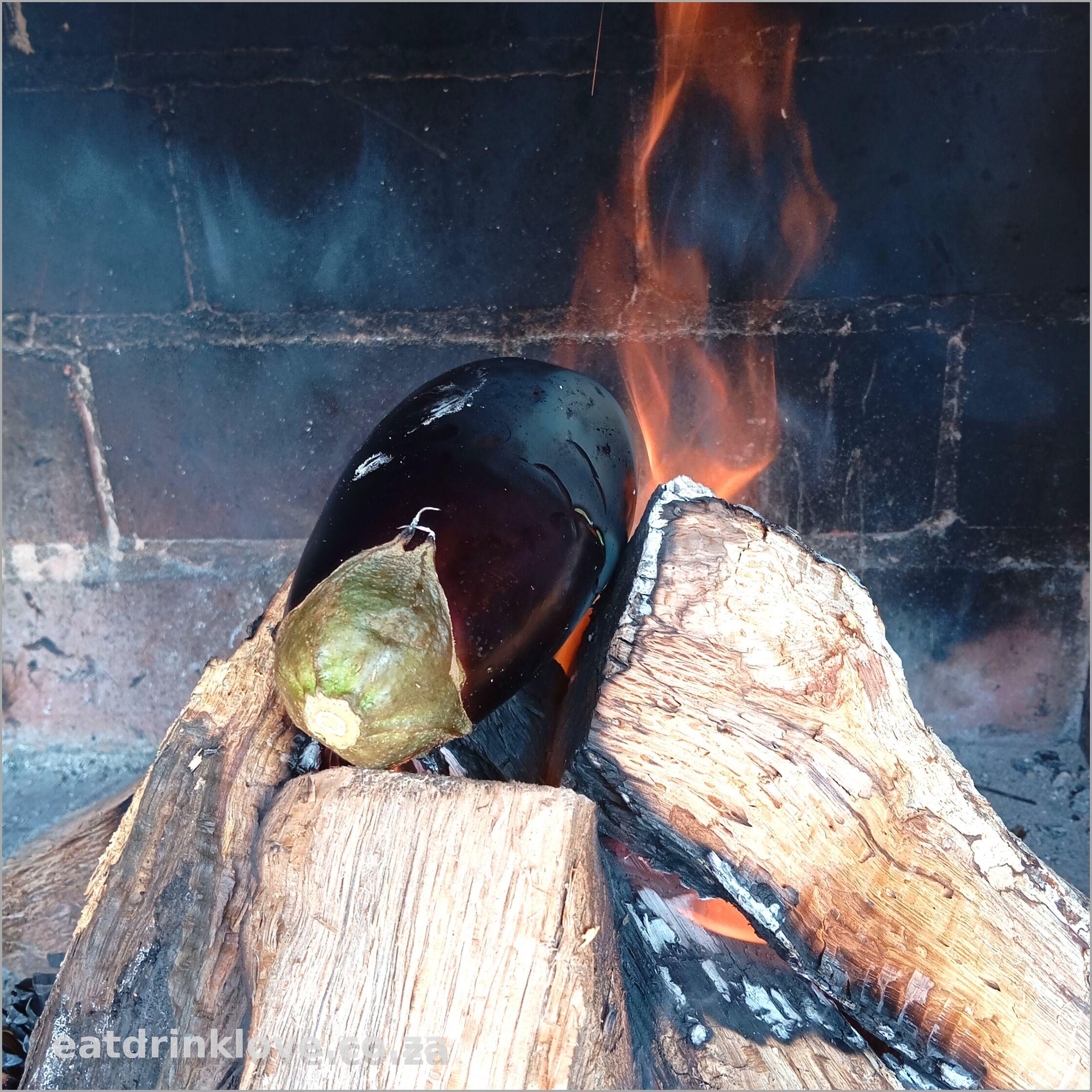 | 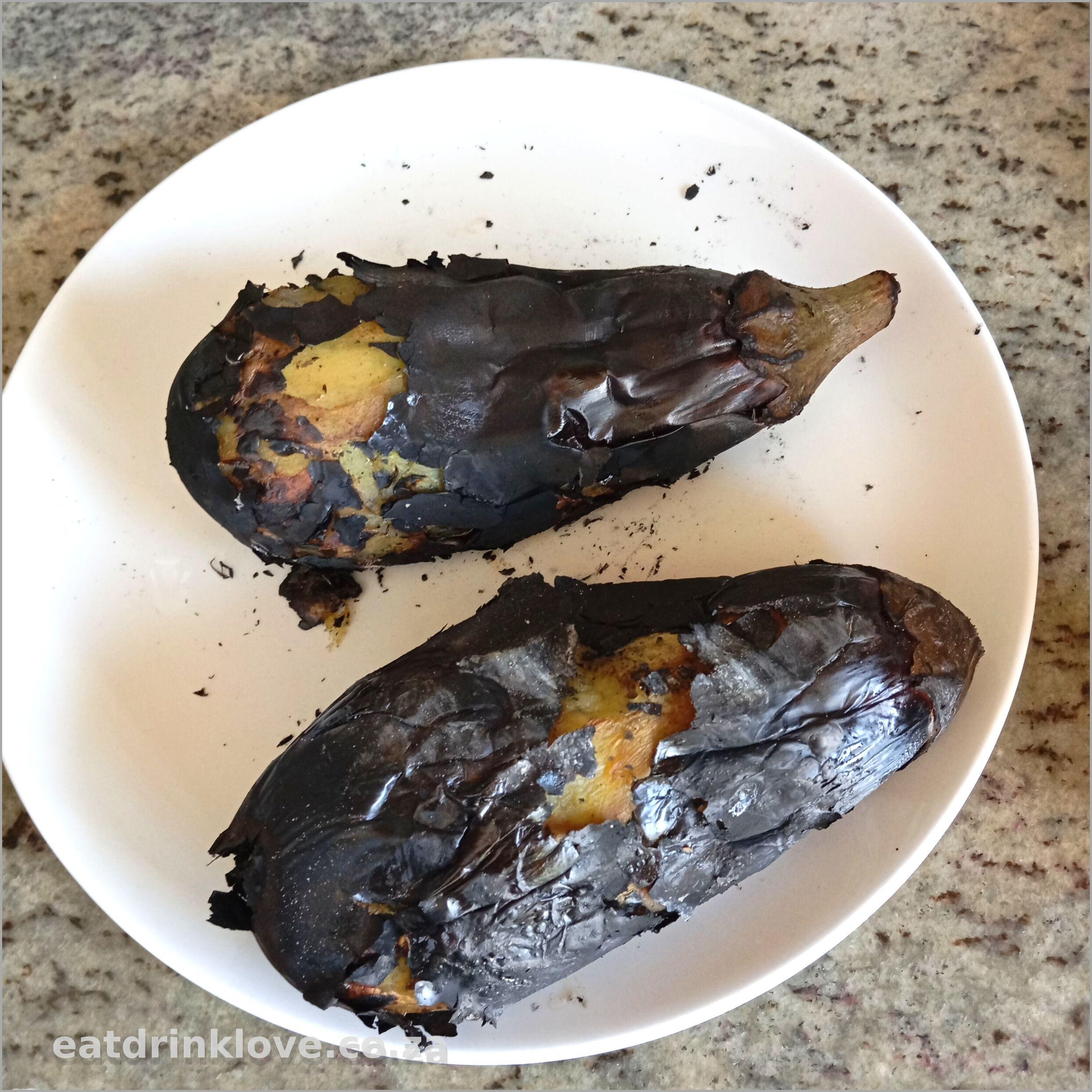 |
Heat a cast-iron pot with a lid over the fire or high heat. Add olive oil and brown the marinated lamb in batches, then remove and set aside.
In the same pot, add onions and fry until translucent and soft (about 5-7 minutes). If the bottom is sticky, add 100ml of water/stock to loosen the browned bits.
Stir in garlic, tomato paste, canned tomatoes, pul biber, Turkish oregano, sugar and bring to a boil. Add the meat, stir and add water/stock so the meat is just covered. Once again, bring to a boil.
Reduce heat to low, cover, and simmer for 90 minutes (or up to 2 hours) until the meat is tender. Adjust salt to taste.
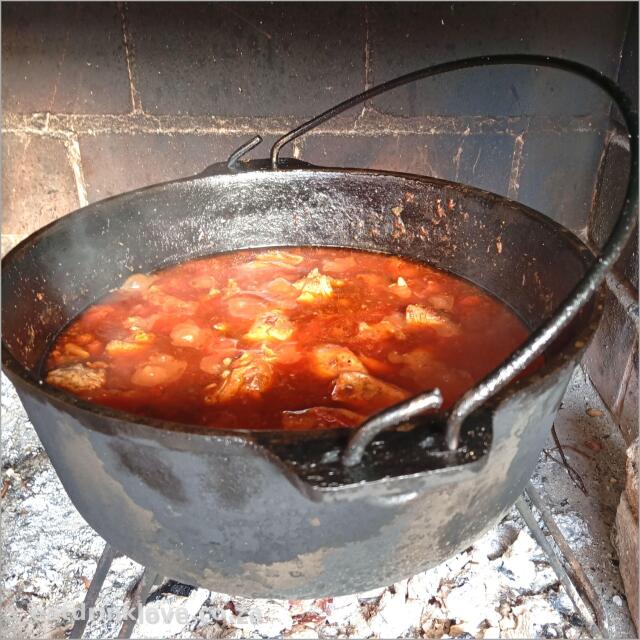
Beğendi Sauce Preparation:
While the lamb simmers, prepare the sauce. In a large pan, melt butter over medium heat. Add flour and whisk continuously for 1-2 minutes until combined.
Gradually add milk while whisking to avoid lumps, cooking until the sauce thickens (about 5-7 minutes). Season with salt and pepper.
Roughly chop the grilled aubergine and stir into the sauce until well incorporated. Adjust seasoning again if needed.

Serving:
Spoon the beğendi sauce onto a plate, creating a base. Top with the lamb stew. Optionally, serve the stew over bulgur wheat pilaf with the sauce around it, as I did.
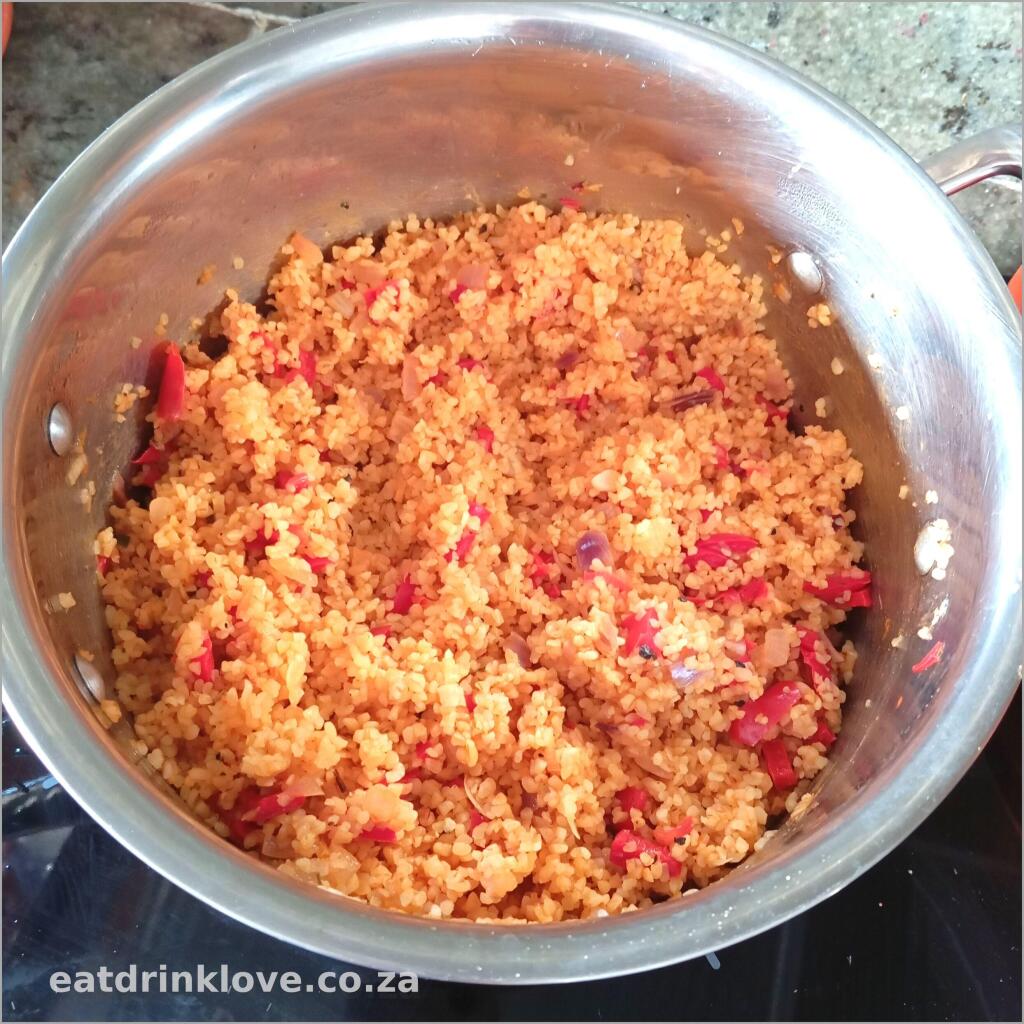
Sprinkle with freshly chopped parsley before serving.
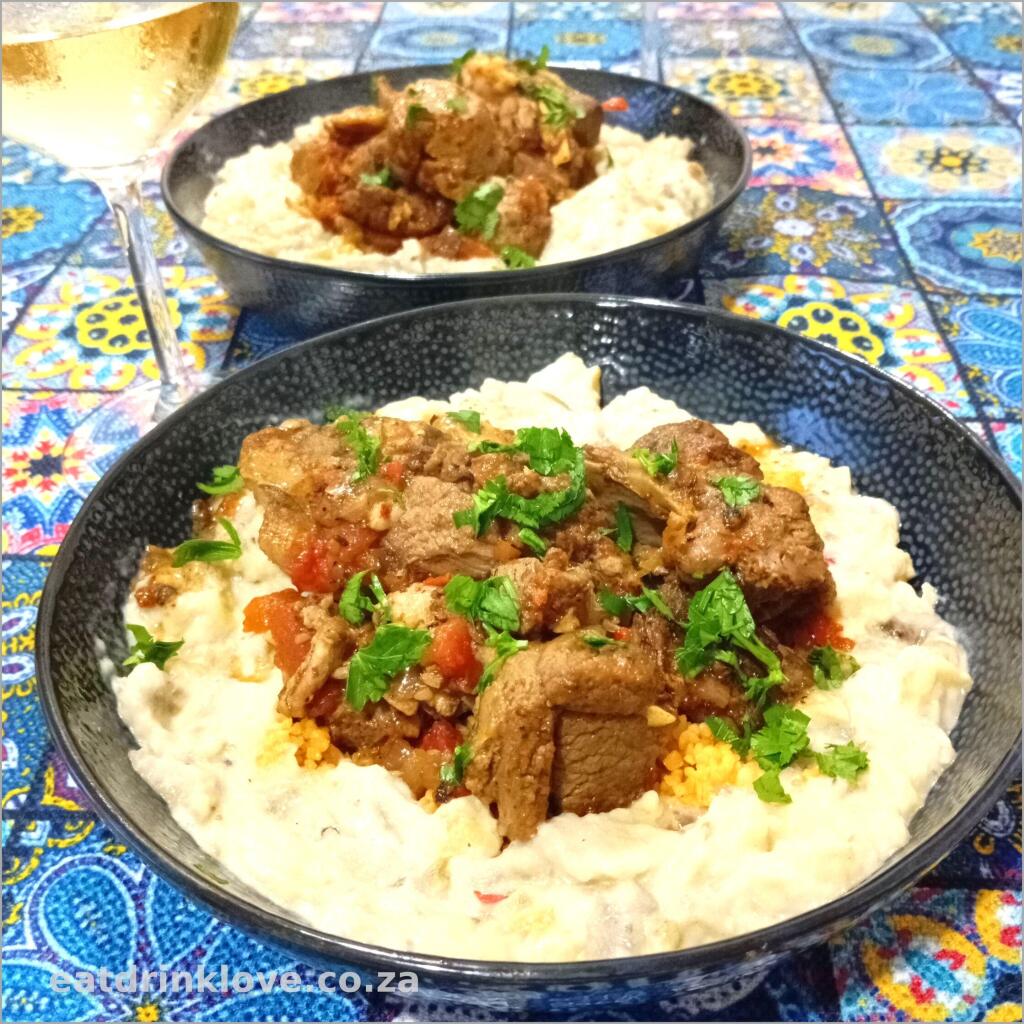
History
Hünkar Beğendi carries a fascinating legacy, with two captivating stories behind its creation that highlight its royal connections. The first tale suggests it originated during a hunting expedition when a sultan, weary from the chase, sought refuge in a humble cottage. There, he was served a simple yet exquisite dish of lamb and eggplant purée by the cottagers, so impressed by its flavors that he ordered it replicated in the imperial palace, thus elevating it to a sultan’s delight. The second story ties the dish to a romantic encounter: it’s said that Sultan Abdülaziz, during a state visit to France in 1867, fell in love with the wife of Napoleon III, Empress Eugénie. Enchanted by the refined French cuisine he witnessed, he tasked his chefs to create a dish blending Ottoman and French influences. They crafted Hünkar Beğendi, combining the creamy béchamel-style eggplant purée (inspired by French techniques) with the robust lamb stew of Turkish tradition, naming it in honor of the sultan’s admiration. While the true origin remains debated, both stories underscore the dish’s evolution from rustic roots to a symbol of Ottoman culinary artistry, reflecting the empire’s cultural exchanges with Europe.

